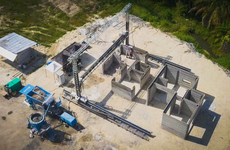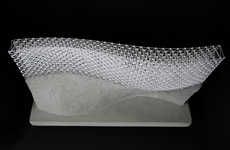
Skanska and Foster + Partners Create First-Ever Concrete Building Robot
Jana Pijak — January 26, 2015 — Tech
Skanska and Foster + Partners have recently collaborated on the world's first 3D concrete printer. In today's tech-focused world, architectural projects face few limits when it comes to their construction and this is thanks to the work of dedicated researchers. These researchers are finding ways to build faster and stronger structures with the use of sophisticated technologies.
Taking inspiration from 3D printing of a smaller scale, the first-ever 3D concrete printer imports accurate specs into computer-generated models. When complete, these virtual models are materialized to form concrete building components.
This 3D concrete printer experiments with unlikely materials and aims to create large-scale building components quickly and efficiently. Construction company Skanska did not only team up with Foster + Partners for this project but also worked alongside Loughborough University engineers to make it a reality.
Taking inspiration from 3D printing of a smaller scale, the first-ever 3D concrete printer imports accurate specs into computer-generated models. When complete, these virtual models are materialized to form concrete building components.
This 3D concrete printer experiments with unlikely materials and aims to create large-scale building components quickly and efficiently. Construction company Skanska did not only team up with Foster + Partners for this project but also worked alongside Loughborough University engineers to make it a reality.
Trend Themes
1. 3D Concrete Printing - The use of 3D concrete printing technology is disrupting the construction industry by enabling the creation of large-scale building components quickly and efficiently.
2. Tech-driven Architectural Projects - The integration of sophisticated technologies into architectural projects is paving the way for limitless construction possibilities.
3. Collaborative Research for Concrete Innovation - Partnerships between construction companies, architectural firms, and universities are driving advancements in concrete printing and material experimentation.
Industry Implications
1. Construction - The construction industry can benefit from leveraging 3D concrete printing technology to improve efficiency, reduce costs, and enable innovative design possibilities.
2. Architecture - The architectural industry has the opportunity to embrace tech-driven projects and push the boundaries of traditional construction methods using 3D concrete printing.
3. University Research - Universities focusing on concrete printing research have the potential to contribute to disruptive innovation by exploring novel materials and printing techniques.
2.5
Score
Popularity
Activity
Freshness















